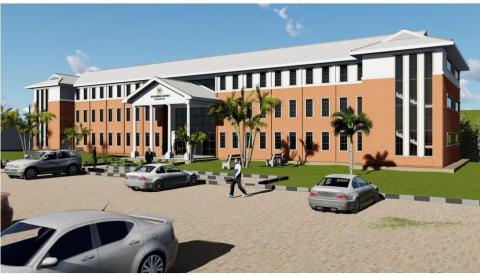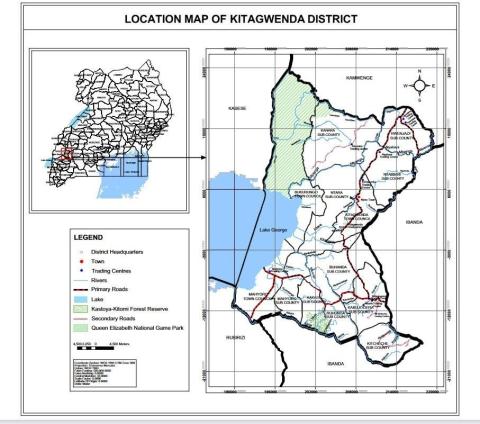Overview
Proposed Administration Block.

District Profile
Kitagwenda District is a district in Western Uganda. That is named after Kitagwenda County, which is coterminous with the district
Kitagwenda District is part of the Kingdom of Toro, one of the ancient traditional monarchies in Uganda, the pearl of Africa. The kingdom is coterminous with Rwenzori sub-region, home to an estimated 1 million inhabitants in 2010, according to the national population and housing census conducted that year.
The districts that constitute the sub-region are: (a) Bunyangabu District
(e) Kyenjojo District and Kitagwenda District
District Map

Kitgwenda district was created in 2019 by an Act of Parliament. Prior to which, was part of Kamwenge District. The district is coterminous with Kitagwenda County, after which it is named. It is predominantly a rural area district.
Kitagwenda is made up of one county, Four town councils and nine sub-counties. The town councils are:
1. Kitagwenda town council
2. Kabujogera town council.
3. Mahyoro town council
4. Bukurungo town council
The sub-counties are Nyabbani, Ntara, Kanara, Kicheche, Kakasi, Buhanda, Ruhunga, Rwenjaza and Mahyoro.
There are numerous aquatic systems in the district including:
· River Mpanga
· Dura River
· Kyambura Game Reserve|Rwenshama Falls
· Katonga Wildlife Reserve|Katonga Nature Reserve
· Queen Elizabeth National Park
· Kashyoha-Kitomi forest reserve
· The Western Rift Valley
· Kinyamugara East African Plateau
· Bachwezi habitats around Kikondo hills
· Cycad Encephalartos whitelockii
· Mahyoro Tree of life
Population:
In 2011, the population of Kitagwenda County was estimated to be about 129,600 inhabitants. The national population census and household survey held on 27 August 2014, enumerated the population of Kitagwenda at 165,354 people. The predominant ethnic group in the district are Batagwenda and the language spoken is Rutagwenda.
The district being a cosmopolitan village, there is a diverse heritage of ethnic groups with a most common economic activity being Agriculture (crop farming and animal rearing).
